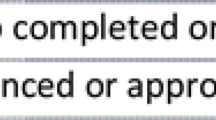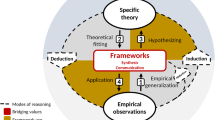Abstract
In this fast-paced modern world, science, technology, and innovation (STI) are key drivers that impact all areas of life at individual and organisational levels, deepening the relationship between science and society. The degree of acceptance and absorption capacity of STI varies across people and organisations within countries as well as at a cross-cultural level. As the values of people and society, in addition to the latter’s structure, are changing, it has been increasingly challenging to identify the aims of policies and the indicators to monitor those policies. When considering the future direction of STI policy, it is important to understand the interrelationships between individuals, society and STI from a policy perspective. In our project, to explore the desirous relationship between science and society, we propose the behavioural changes necessary for actors, such as citizens, policymakers, researchers, the media, and industry. We adopt an experimental ‘participatory’ approach to develop the indicator plan by conducting multiple workshops. This paper introduces our project’s experiment of designing such indicators through ‘vision-driven’ approaches.





Similar content being viewed by others
Availability of data and material
The comprehensive list of goals, targets, actions, and indicators is available online and also upon request to the corresponding author.
References
Bauer, M. (2008). “Survey” research on public understanding of science. In M. Bucchi & B. Trench (Eds.), Handbook of public communication of science and technology. London/New York: Routledge.
Council for Science, Technology and Innovation (CSTI), Cabinet Office, Government of Japan. (2015). The fifth science and technology basic plan of Japan. Retrieved July 14, 2020, from, https://www8.cao.go.jp/cstp/kihonkeikaku/5basicplan_en.pdf.
Jong, J. P. J., & von Hippel, E. (2013). User innovation: Business and consumers. In F. Gault (Ed.), Handbook of innovation indicators and measurement (pp. 109–132). Cheltenham: Edward Elgar.
Kuhlmann, S., & Rip, A. (2019). Next generation science policy and grand challenges. In D. Simon, S. Kuhlmann, J. Stamm, & W. Canzler (Eds.), Handbook on science and public policy (pp. 12–25). Cheltenham: Edward Elgar.
OECD. (2018). OECD science, technology and innovation outlook 2018: Adapting to technological and societal disruption. Paris: OECD Publishing. https://doi.org/10.1787/sti_in_outlook-2018-en.
Okamura, A. (2017). Measurement of cultural and social relevance of science: construction of indicators for the relationship between STI and society, STI 2017—Science, Technology and Innovation indicators, Poster Session.
Okamura, A., & Nishijo, K. (2019). Constructing vision-driven indicators to enhance better interaction of science and society. In 17th international conference on scientometrics and informetrics international society for scientometrics and informetrics. 2019, Rome.
Owen, R., & Pansera, M. (2019). Responsible innovation and responsible research and innovation. In D. Simon, S. Kuhlmann, J. Stamm, & W. Canzler (Eds.), Handbook on science and public policy (pp. 26–48). Cheltenham: Edward Elgard.
Peter, V., Maier, M., Mejlgaard, N., Bloch, C., Madsen E., Griessler, E., et al. (2018a). Monitoring the evolution and benefits of responsible research and innovation in Europe: Summarising insights from the MoRRI Project, May, 2018. Retrieved July 14, 2020, from, https://op.europa.eu/en/publication-detail/-/publication/fdd7dd10-c071-11e8-9893-01aa75ed71a1/language-en/format-PDF/source-85222161.
Peter, V., Maier, F., Spaini, C., Woolley, R., Meijer, I., & Bloch, C. (2018b). Monitoring the evolution and benefits of responsible research and innovation in Europe: The evolution of Responsible Research and Innovation, September 2018. Retrieved July 14, 2020, from, https://op.europa.eu/en/publication-detail/-/publication/2c5a0fb6-c070-11e8-9893-01aa75ed71a1/language-en.
Schillo, R. S., & Robinson, R. M. (2017). Inclusive innovation in developed countries: The who, what, why, and how. Technology Innovation Management Review, 7(7), 34–46. https://doi.org/10.22215/timreview/1089.
United Nations. (2015). Transforming our world: The 2030 Agenda for sustainable development. Retrieved July 14, 2020, from, https://sustainabledevelopment.un.org/post2015/transformingourworld
United Nations. (2019). The E-handbook on sustainable development goals indicators. Retrieved July 14, 2020, from, https://unstats.un.org/wiki/display/SDGeHandbook/Home.
Acknowledgements
The authors thank all the members of the ‘Measurement of STI and Society’ project at the Science for RE-designing Science, Technology and Innovation Policy (SciREX) Center and all participants of workshops and open-forum discussions for their contributions. The views and opinions expressed here are solely those of the authors, and they do not, in any way, represent those of the institution to which they are affiliated.
Funding
This work was supported by the Science for RE-designing Science, Technology and Innovation Policy (SciREX) Programme in Japan, and the ‘Theoretical and Practical Study for new RRI Framework: a study series of education, evaluation, and politics’ of the Topic-Setting Programme to Advance Cutting-Edge Humanities and Social Sciences Research of the Japan Society for the Promotion of Science (JSPS).
Author information
Authors and Affiliations
Corresponding author
Ethics declarations
Conflict of interest
Not applicable.
Code availability
Not applicable.
Rights and permissions
About this article
Cite this article
Okamura, A., Nishijo, K. Constructing vision-driven indicators to enhance the interaction between science and society. Scientometrics 125, 1575–1589 (2020). https://doi.org/10.1007/s11192-020-03598-z
Received:
Published:
Issue Date:
DOI: https://doi.org/10.1007/s11192-020-03598-z




